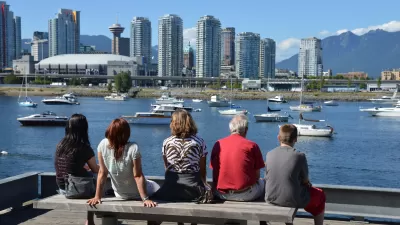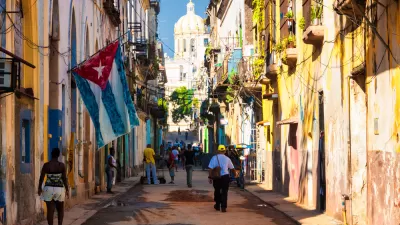The Project for Public Spaces celebrates its 40th anniversary this year, spanning a seismic shift from modernist planning and urban decay of the 1970s to the urban resurgence and focus on smart growth of today. PPS's Ethan Kent reflects.

The Project for Public Spaces, one of the country's leading advocates for placemaking and revitalization of public spaces, was founded in the depths of urban decay in 1975. At the time, big projects and top-down planning held sway. Inspired by Jane Jacobs, founder Fred Kent advocated for many of the urban innovations that are commonplace today.
His son Ethan continues that work, contending that, for all its changes, contemporary policymaking still has not embraced placemaking as a core principle.
One of the challenges lies in the amorphous definition of "place." Even if "place" is important, if policymakers and planners cannot define it, they often have trouble promoting it. In a Q&A for Policy Innovations, Kent said:
"A place is how we are attached to our community, how we experience our world and our community. It's really the patterns of social activity, the cultural openness, commercial and cultural relationships that make a place. There is no formal discipline that is really delivering "place." Just having a space be public space alone isn't often giving value to places, and design is only a small part of what makes a place work."
That's changing with a "place capital metric" being used in Adelaide, Australia, and promoted by PPS. "We measure how businesses are doing, how many people are using the spaces, stationary activity, whether people are gathering in groups, whether there are enough women, children, and elderly in the public space, etc.," said Kent.
Then again, there are even more ambiguous ways to evaluate cities—not by amenities and attractiveness but by the emotional connection between cities and their inhabitants:
"The livability or quality of life lists [that are published every year] look at cities that best balance economic competitiveness and leisure activity, which are the most expensive cities in the world....I think is more about loveabilty, attachment and comfort; and those qualities can occur in some of the poorest parts of the world too."
FULL STORY: What Makes a City Great? It’s not the Liveability but the Loveability

Alabama: Trump Terminates Settlements for Black Communities Harmed By Raw Sewage
Trump deemed the landmark civil rights agreement “illegal DEI and environmental justice policy.”

Planetizen Federal Action Tracker
A weekly monitor of how Trump’s orders and actions are impacting planners and planning in America.

The 120 Year Old Tiny Home Villages That Sheltered San Francisco’s Earthquake Refugees
More than a century ago, San Francisco mobilized to house thousands of residents displaced by the 1906 earthquake. Could their strategy offer a model for the present?

San Francisco Opens Park on Former Great Highway
The Sunset Dunes park’s grand opening attracted both fans and detractors.

Oregon Legislature to Consider Transit Funding Laws
One proposal would increase the state’s payroll tax by .08% to fund transit agencies and expand service.

Housing Vouchers as a Key Piece of Houston’s Housing Strategy
The Houston Housing Authority supports 19,000 households through the housing voucher program.
Urban Design for Planners 1: Software Tools
This six-course series explores essential urban design concepts using open source software and equips planners with the tools they need to participate fully in the urban design process.
Planning for Universal Design
Learn the tools for implementing Universal Design in planning regulations.
Clanton & Associates, Inc.
Jessamine County Fiscal Court
Institute for Housing and Urban Development Studies (IHS)
City of Grandview
Harvard GSD Executive Education
Toledo-Lucas County Plan Commissions
Salt Lake City
NYU Wagner Graduate School of Public Service




























